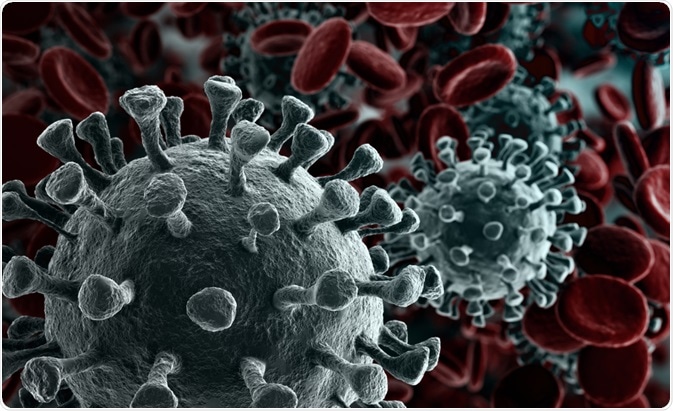How Does Contact Tracing Work?

Introduction
Severe acute respiratory syndrome coronavirus 2 (SARS-CoV-2), the novel coronavirus that leads to a severe respiratory illness called COVID-19, has become a global pandemic.
Numerous preventative measures can be taken to prevent the spread of the virus, such as keeping 1 to 2 meters away from other people both in the home and in public, wearing facial coverings to protect others against pre- and asymptomatic carriers of the virus, and increasing the number of times hands and surfaces are washed and disinfected every day.
Along with these preventative measures, contact tracing is another key part of controlling a disease outbreak.
Image Credit: Redkey USB/Shutterstock.com
What is Contact Tracing?
Contact tracing is used globally by healthcare professionals to limit the spread of all kinds of infections, not just the novel coronavirus. It is used to quickly determine whether any secondary cases of a virus, in this case, COVID-19, have occurred due to an infected person coming into contact with other people.
Having this information on whether a person who has tested positive for COVID-19 has come into contact with other people allows healthcare professionals to intervene and stop the virus's further spread.
There are several steps to contact tracing, which include:
- Quickly identifying the people, a person with a confirmed or probable case of COVID-19 has come into contact with
- Giving those contacts information on how to quarantine and maintain proper personal hygiene when they cough or sneeze or wash their hands
- Offering advice on what to do if contacts develop symptoms of COVID-19
- Testing contacts with symptoms or high-risk asymptomatic contacts if there are resources available.
Who Is a Contact?
A contact is any person who came into contact with a person with COVID-19 within 48 hours before their symptoms began, to 14 days after their symptoms began.
If a person with COVID-19 did not experience symptoms, a contact is a person who came into contact with the COVID-19 positive person within 48 hours before the person’s sample tested positive to 14 days after their sample was taken.
The Different Types of Contacts
There are different types of contact depending on the level of risk associated with their exposure to an infected person.
High-Risk Close Contact
Close contact is known as a high-risk exposure. Close contact is someone who has had face-to-face contact with a COVID-19 positive person within 2 meters for over 15 minutes.
A person is also considered a high-risk close contact if they have had physical contact with someone with COVID-19 or if they have been in contact with infected droplets from that person, such as if they had been sneezed or coughed on.
Other conditions that mean someone is a high-risk close contact are:
- Being with a person with COVID-19 in an enclosed space for over 15 minutes, such as a house, classroom, waiting room, or office.
- Being in an airplane and sitting two seats away from someone with COVID-19
- Being a healthcare worker or a person providing care to COVID-19 patients
- Being a healthcare worker coming into regular contact with COVID-19 specimens or samples without using personal protective equipment.
Image Credit: creativeneko/Shutterstock.com
Low-Risk Contact
A low-risk contact is someone who has had face-to-face contact with a COVID-19 positive person within 2 meters for less than 15 minutes or who was traveling with or in an enclosed space with an infected person for less than 15 minutes.
Healthcare workers, those providing care to people with COVID-19, or staff handling COVID-19 samples or specimens who use personal protective equipment are also considered low-risk contacts.
Contact Tracing Steps
The steps taken in contact tracing, also called contact tracing workflow, are as follows:
- A person tests positive for COVID-19.
- After testing positive, the person is interviewed remotely to identify who they have come into contact with
- Their contacts are then assessed according to their level of risk (also known as contact triage)
- The contacts are contacted and advised on what they should do, including getting tested for COVID-19 themselves if possible and how to quarantine themselves.
- The contacts are then referred for support services such as prioritized food deliveries and any healthcare providers if necessary.
- There will be regular follow-ups with the contacts during their period of quarantine.
- After 14 days from their initial exposure, if the contact is asymptomatic, they are allowed to end their quarantine.
- If a contact tests positive for COVID-19, they should be referred to medical care as appropriate.
If the resources are available, all close contacts of the initial person with COVID-19 should be tested for the virus. If no tests are available for all close contacts, symptomatic people should isolate immediately and seek medical advice. Asymptomatic people should quarantine for 14 days from their last exposure to the infected person.
A contact of a person with COVID-19 should be notified within 24 hours that they have been exposed to the virus. They should also be told what symptoms to look out for to effectively monitor their health and report new symptoms if they arise.
Benefits of Contact Tracing
There is evidence showing that effective contact tracing has helped reduce the time between the onset of symptoms and when a person begins to self-isolate, meaning the number of exposed people to COVID-19 positive people can be greatly reduced.
It also means that those exposed to the virus are aware and can quickly seek advice or treatment as they need it. Contact tracing also provides valuable information on the epidemiology of SARS-CoV-2.
Summary
Contact tracing is a valuable method of stopping disease spread of any kind. It is currently being used to help prevent the spread of the COVID-19 pandemic.
Anyone who has tested positive for COVID-19 will be contacted or will have to report who they have been in contact with from 48 hours before their symptoms began, and they will have to quarantine for 14 days.
Those who have been identified as contacts will be advised on their own preventative measures to ensure they do not pass on the virus to other people and to ensure they are safe if they develop symptoms.
Sources
- Centers for Disease Control and Prevention. (2020). www.cdc.gov/…/contact-tracing.html
- European Centre for Disease Prevention and Control. (2020). www.ecdc.europa.eu/…/covid-19-contact-tracing-public-health-management
- Public Health Agency. (N.D.). www.publichealth.hscni.net/…/contact-tracing
Further Reading
- All Coronavirus Disease COVID-19 Content
- What Mutations of SARS-CoV-2 are Causing Concern?
- What is the Clinical Impact of COVID-19 on Cancer Patients?
- Can Pets Get COVID-19?
- An Overview of the SARS-CoV-2 Vaccines
Last Updated: Jan 21, 2021

Written by
Lois Zoppi
Lois is a freelance copywriter based in the UK. She graduated from the University of Sussex with a BA in Media Practice, having specialized in screenwriting. She maintains a focus on anxiety disorders and depression and aims to explore other areas of mental health including dissociative disorders such as maladaptive daydreaming.
Source: Read Full Article

